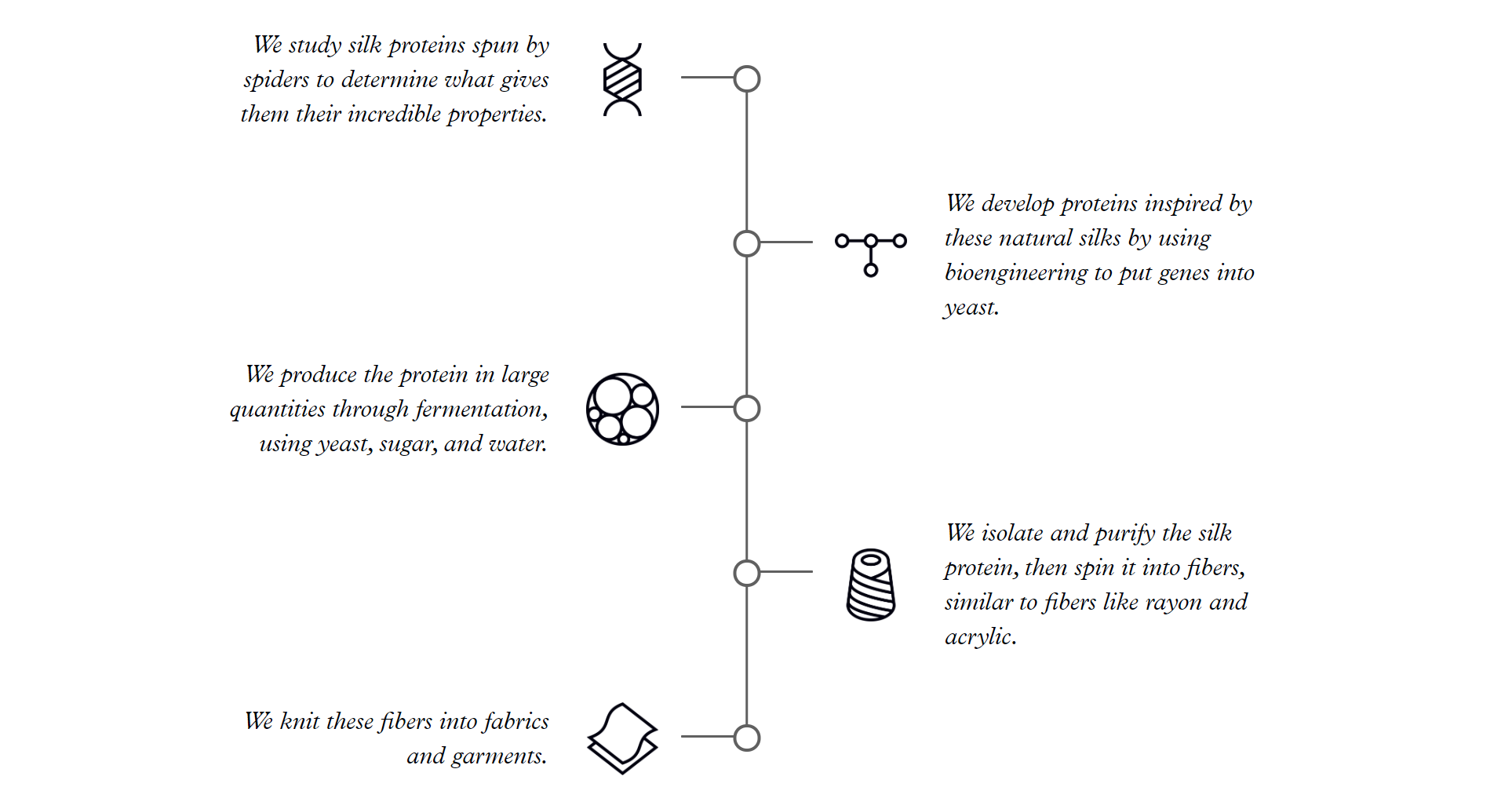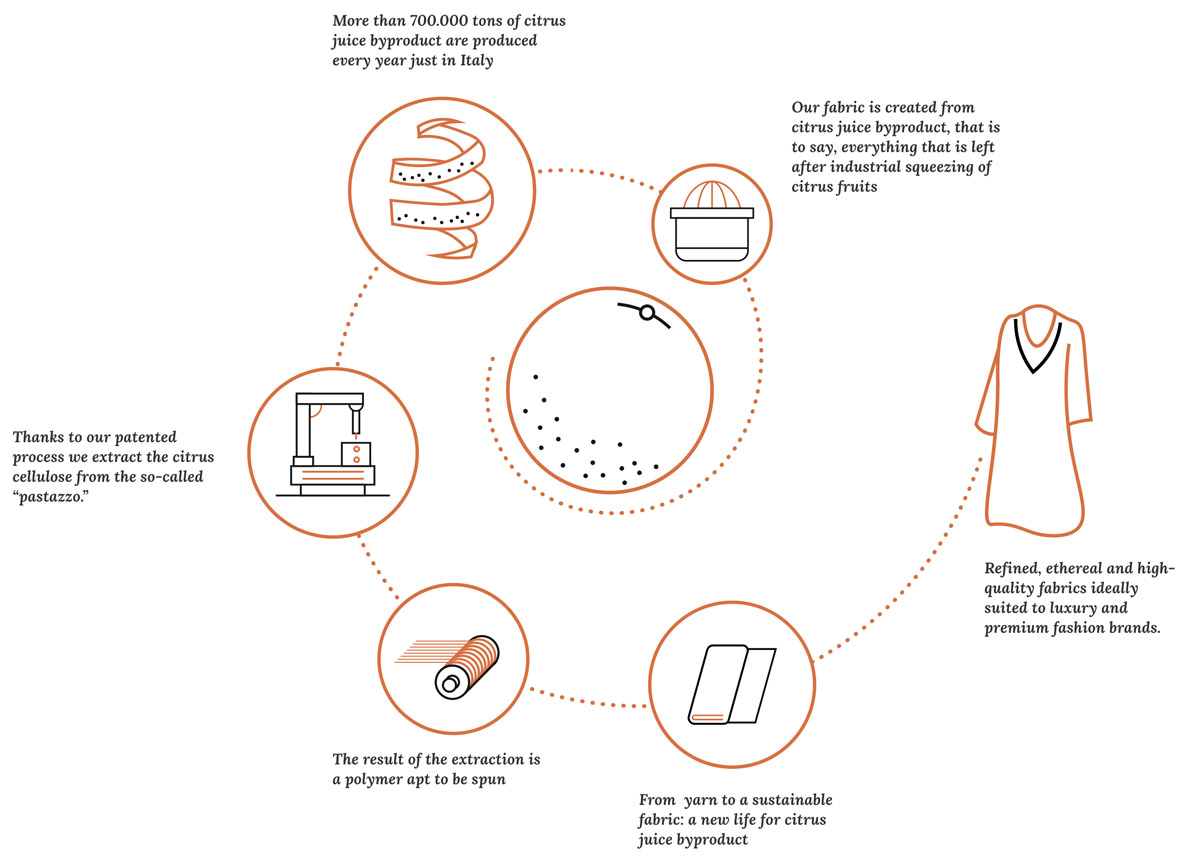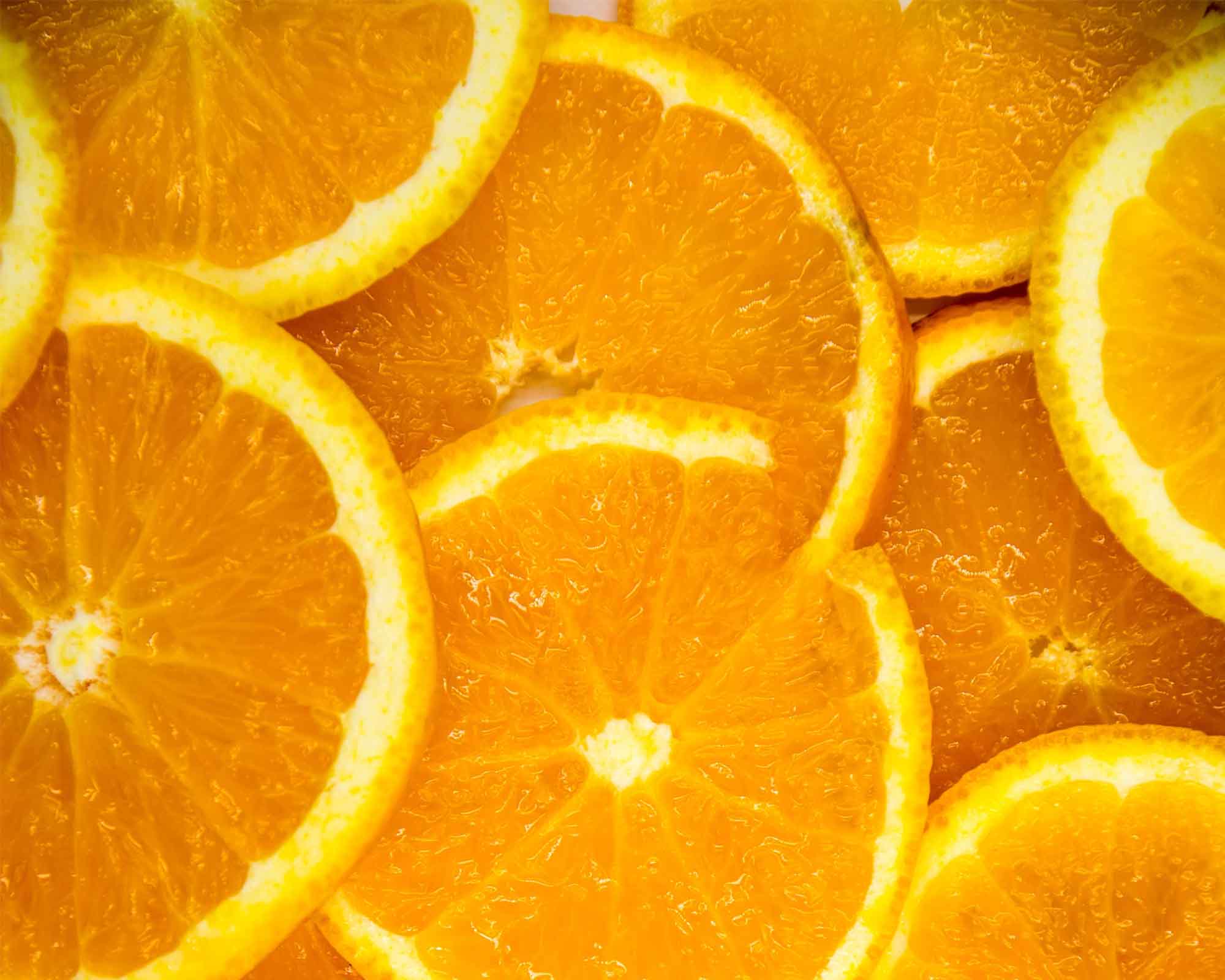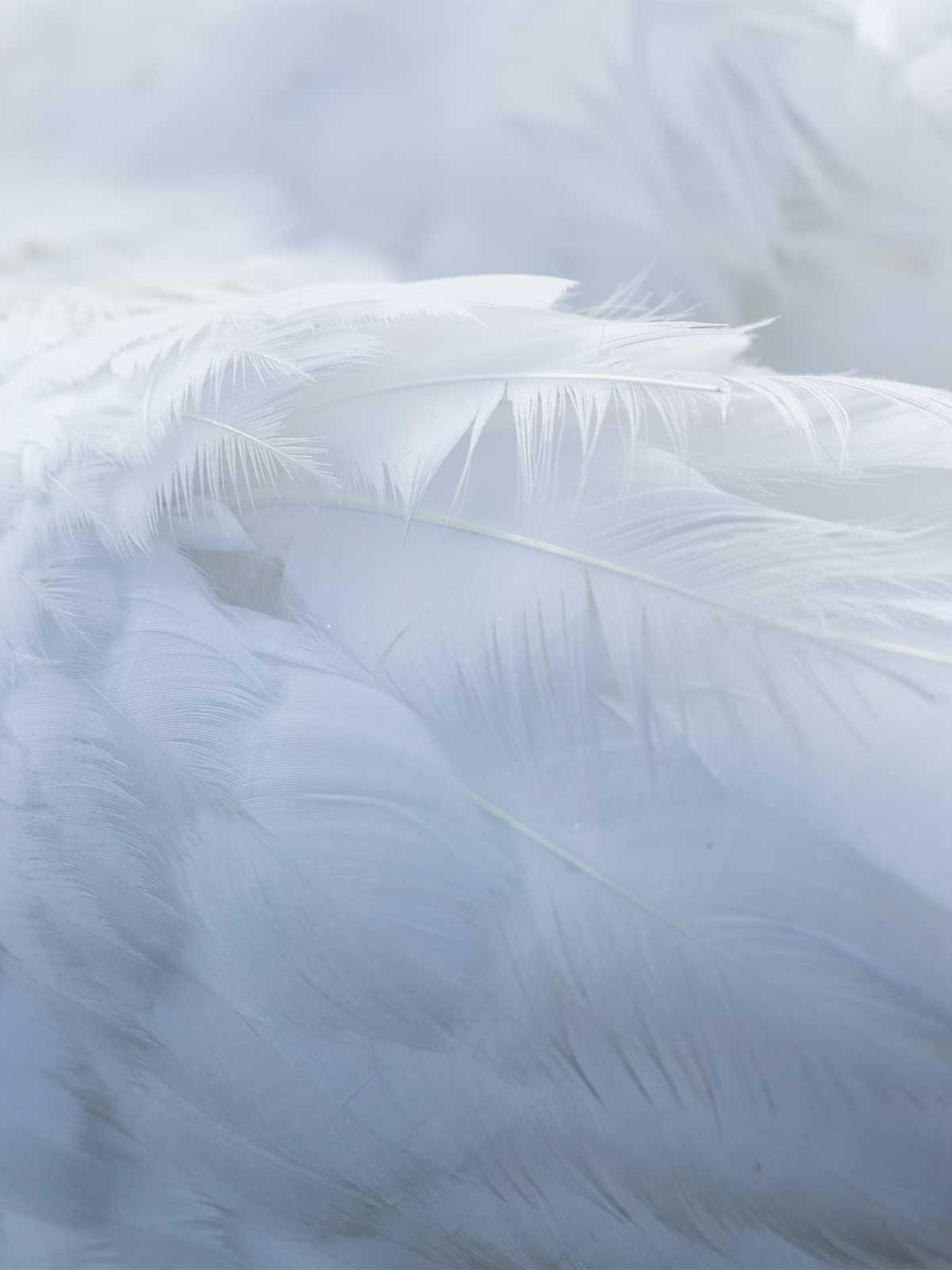Silk is considered one of the most luxurious fabrics in the world, and has been used across cultures for thousands of years—but is the material all it’s cracked up to be? With issues around the impact of silk on people, the planet, and the worms who create it, we want to highlight some ethical alternatives that are breaking into the market. Introducing the innovative citrus fibre silk and vegan spider silk: fabrics which replicate the properties of conventional silk—both are light, soft, durable, and versatile—whilst offering certain benefits from a technical, environmental, and animal welfare perspective.
What are they, exactly?
Citrus fibre silk is made from the cellulose of by-products of the citrus industry by a Sicilian company called Orange Fiber who have patented a process to turn some of their local citrus residue deriving from citrus-processing activities, into an attractive wearable textile.
Microsilk is the trademarked name of a lab-made spider silk produced by California-based company Bolt Threads. It is a synthetic fabric, but one which requires no land or chemicals to produce—only water, yeast, sugar, and a pinch of DNA.
What’s the big deal?
Of the 700,000 tons of citrus “pastazzo” (roughly translated as “paste”) produced in Italy each year, only a small proportion is used for animal feed and fertilizer, whilst most is typically discarded in landfill, thereby contributing to CO2 emissions. Some of the paste is also dumped illegally in nature due to the costs involved in proper disposal. So, diverting some of this waste into making citrus fibre limits negative environmental impacts—with the added advantage that no virgin materials are required in order to produce citrus fibre. Indeed, whilst it is possible to blend it with other fibres (eg. cotton or polyester), a 100% citrus-derived fabric can also be created!
Microsilk is the result of 8 years’ work and 4,000 formulations by the Bolt Threads team. Based on their studies of how spiders make silk, they bioengineered genes to implant into yeast. The fermentation process with water and sugar produces silk proteins, which are then extracted and spun into yarn.
An unexpected technical benefit the team discovered is that Microsilk holds dyes six times better than conventional silk, meaning that Microsilk will likely be of increasing interest to fashion designers, not just—as originally anticipated—to activewear designers looking for performance fabrics.

Any green credentials?
The production of citrus fibre silk takes place within the Mediterranean region: the citrus cellulose is extracted in Sicily before being sent to Spain for spinning. The yarn is then transformed into silk-like fabric in Como, Italy. This regional production, as well as the fact that Orange Fiber is located on the same site as its citrus by-product supplier, limits the carbon footprint of the finished fabric. Citrus fibre silk is also biodegradable, and will therefore maintain that property when blended with a similarly biodegradable yarn.
Microsilk is potentially fully biodegradable, as exemplified by the Adidas x Stella McCartney Biofabric Tennis Dress which, according to Adidas, would eventually break down into the environment. Bolt Threads seem committed to offering an environmentally-sound product: “Once we finalize our production processes, we will embark on a life cycle analysis to determine the environmental impacts of our material, and utilizing the industry-standard Higg Materials Sustainability Index, will be able to compare the results to dozens of other natural and synthetic materials”. Finally, although GM-derived raw materials are used in the production of Microsilk, the final product contains no GMOs.
Who made my silk alternative?
Currently, the supply chain for both fabrics is relatively limited:
The citrus fibre silk supply chain starts at farm level: the citrus fruits originate from farms in Italy. Some are then purchased by citrus processing plants, such as the company which supplies Orange Fiber with by-products. Once Orange Fiber has extracted the cellulose, it contracts with companies in Spain and Italy for the spinning and textile-making processes, respectively.
Microsilk is entirely lab-made at Bolt Threads’ premises, although the raw ingredients used will have their own supply chains. The sugar used in the fermentation process originates from the US.
How about animal welfare?
The great news in terms of animal welfare is that both citrus fibre silk and vegan spider silk contain no animal products, and do not harm animals in the production process—in contrast with conventional silk, which usually requires the pupae to be boiled alive before the cocoon is used for processing!

Where can I find them?
Currently, both Orange Fiber’s silk and Microsilk are only commercialized to a limited extent, but both fabrics have already received a stamp of approval from renowned brands: Ferragamo and H&M have used citrus fibre silk in their collections, whilst Stella McCartney partnered with Bolt Threads and showcased Microsilk designs at Paris Fashion Week in 2017. We fervently hope this is only the beginning of a long and comfy relationship between ethical silk alternatives and fashion, and would love to see some of our favourite sustainable fashion brands jump on board with these innovations in the near future.
Learn more about sustainable and ethical materials.
About the author: Elsa is an English-qualified fashion lawyer. She headed the legal team of a global luxury fashion PR company in London, and is currently focusing on projects dedicated to improving sustainability practices in the fashion industry.
















